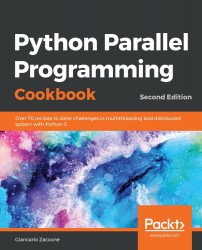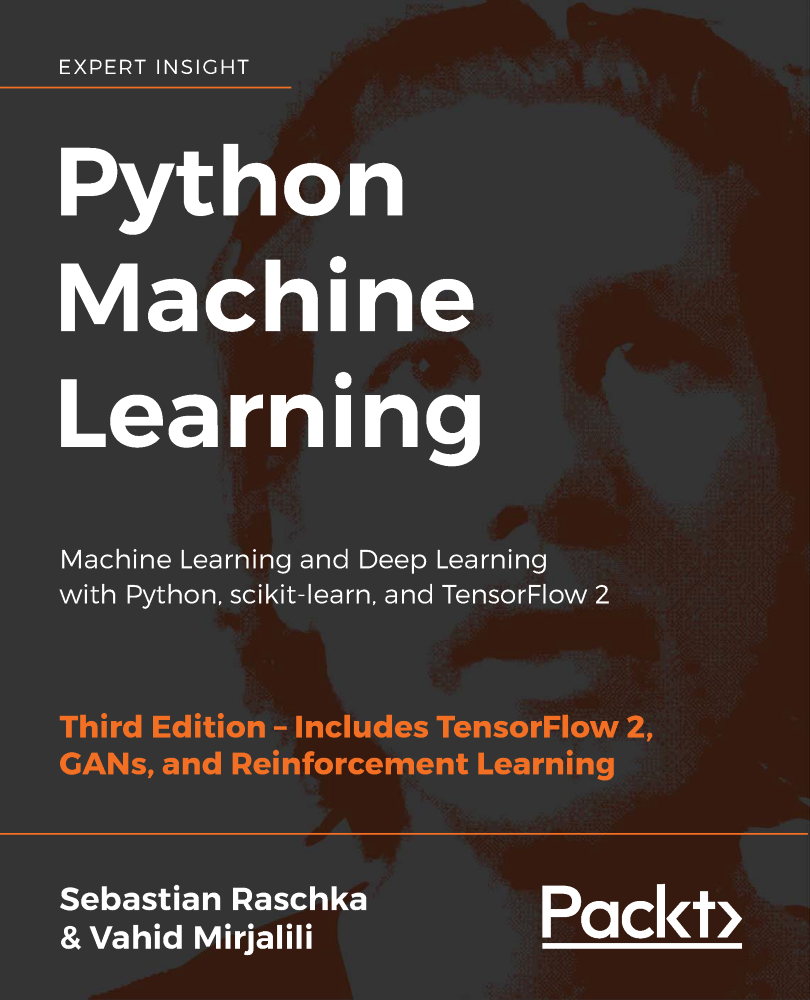Python Parallel Programming Cookbook — Second Edition
Implement effective programming techniques in Python to build scalable software that saves time and memory Key Features Design distributed computing systems and massive computational tasks coherently Learn practical recipes with concise explanations that address development pain points encountered while coding parallel programs Understand how to host your parallelized applications on the cloud Book Description Nowadays, it has become extremely important for programmers to understand the link between the software and the parallel nature of their hardware so that their programs run efficiently on computer architectures. Applications based on parallel programming are fast, robust, and easily scalable. This updated edition features cutting-edge techniques for building effective concurrent applications in Python 3.7. The book introduces parallel programming architectures and covers the fundamental recipes for thread-based and process-based parallelism. You’ll learn about mutex, semaphores, locks, queues exploiting the threading, and multiprocessing modules, all of which are basic tools to build parallel applications. Recipes on MPI programming will help you to synchronize processes using the fundamental message passing techniques with mpi4py. Furthermore, you’ll get to grips with asynchronous programming and how to use the power of the GPU with PyCUDA and PyOpenCL frameworks. Finally, you’ll explore how to design distributed computing systems with Celery and architect Python apps on the cloud using PythonAnywhere, Docker, and serverless applications. By the end of this book, you will be confident in building concurrent and high-performing applications in Python. What you will learn Synchronize multiple threads and processes to manage parallel tasks Use message passing techniques to establish communication between processes to build parallel applications Program your own GPU cards to address complex problems Manage computing entities to execute distributed computational task Write efficient programs by adopting the event-driven programming model Explore cloud technology with Django and Google App Engine Apply parallel programming techniques that can lead to performance improvements Who this book is for The Python Parallel Programming Cookbook is for software developers who are well-versed with Python and want to use parallel programming techniques to write powerful and efficient code. This book will help you master the basics and the advanced of par.
Отзывы — Написать отзыв
Библиографические данные
| Название | Python Parallel Programming Cookbook — Second Edition |
| Автор | Giancarlo Zaccone |
| Соавтор | Safari, an O’Reilly Media Company |
| Издание: | 2 |
| Издатель | Packt Publishing, 2019 |
| Количество страниц | Всего страниц: 370 |
|   |   |
| Экспорт цитаты | BiBTeX EndNote RefMan |
Python Parallel Programming Cookbook, 2nd Edition
Nowadays, it has become extremely important for programmers to understand the link between the software and the parallel nature of their hardware so that their programs run efficiently on computer architectures. Applications based on parallel programming are fast, robust, and easily scalable.
This updated edition features cutting-edge techniques for building effective concurrent applications in Python 3.7. The book introduces parallel programming architectures and covers the fundamental recipes for thread-based and process-based parallelism. You’ll learn about mutex, semaphores, locks, queues exploiting the threading, and multiprocessing modules, all of which are basic tools to build parallel applications. Recipes on MPI programming will help you to synchronize processes using the fundamental message passing techniques with mpi4py. Furthermore, you’ll get to grips with asynchronous programming and how to use the power of the GPU with PyCUDA and PyOpenCL frameworks. Finally, you’ll explore how to design distributed computing systems with Celery and architect Python apps on the cloud using PythonAnywhere, Docker, and serverless applications.
By the end of this book, you will be confident in building concurrent and high-performing applications in Python.
What you will learn
- Synchronize multiple threads and processes to manage parallel tasks
- Use message passing techniques to establish communication between processes to build parallel applications
- Program your own GPU cards to address complex problems
- Manage computing entities to execute distributed computational task
- Write efficient programs by adopting the event-driven programming model
- Explore cloud technology with Django and Google App Engine
- Apply parallel programming techniques that can lead to performance improvements
Who this book is for
The Python Parallel Programming Cookbook is for software developers who are well-versed with Python and want to use parallel programming techniques to write powerful and efficient code. This book will help you master the basics and the advanced of parallel computing.
Table of Contents
- Getting Started with Parallel Computing and Python
- Thread-based Parallelism
- Process-based Parallelism
- Message Passing
- Asynchronous Programming
- Distributed Python
- Cloud Computing
- Heterogeneous Computing
- Python Debugging and Testing
Python Parallel Programming Cookbook — Second Edition
Learn algorithms for solving classic computer science problems with this concise guide covering everything from fundamental algorithms, such as sorting and searching, to modern algorithms used in machine learning and cryptography
Learn Django 3 with four end-to-end web projects
Applied machine learning with a solid foundation in theory. Revised and expanded for TensorFlow 2, GANs, and reinforcement learning.
By Sebastian Raschka and 1 more
Leverage Python and Raspberry Pi to create complex IoT applications capable of creating and detecting movement and measuring distance, light, and a host of other environmental conditions
Get all the quality content you’ll ever need to stay ahead with a Packt subscription – access over 7,500 online books and videos on everything in tech.
Sign up to our emails for regular updates, bespoke offers, exclusive discounts and great free content.

The word ‘Packt’ and the Packt logo are registered trademarks belonging to Packt Publishing Limited. All rights reserved






